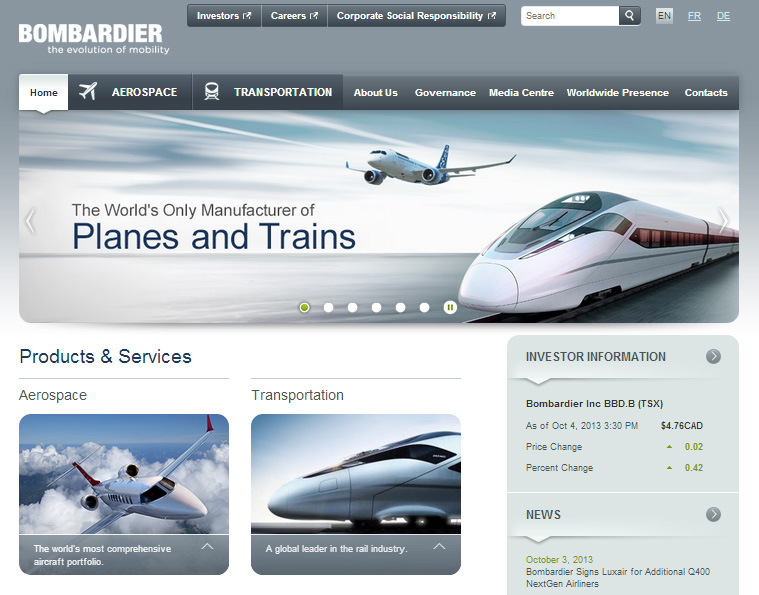This post is in response to an Adobe Digital Marketing Blog post, which discusses the rationale behind Bombardier‘s recent and continuing use of Adobe’s Experience Manager. The blog is titled “Bombardier and Adobe Experience Manager – Unifying the brand of planes and trains”.
Adobe Experience Manager is a software that combines an organization’s existing webpages into one uniform platform. This is especially useful for companies like Bombardier that have many international markets and websites and at least one large diversification in their product mix; for Bombardier, this is planes and trains. By unifying Bombardier’s online content, Experience Manager has effectively allowed the brand to be perceived in one distinctive way.
Companies such as Virgin have had a lot of success by extending their brand into new markets. They leverage their existing positive perception of being a reliable organization in order to gain market share in entirely new markets. This is a common process for many large companies. However, what I found interesting about Bombardier’s story is how they are doing the same process in reverse order. They have existing market share in both the train industry and in the aerospace industry in many international markets, and they are pulling all that back. Regrouping, in a sense. They are attempting to ensure that their extensions are all portraying the same carbon copy image before further dissonance occurs between the major departments of the brand.
A unique aspect of Bombardier is the fact that it is the world’s only innovator in both the train industry and the plane industry. This is their big claim to fame, and in order to showcase it effectively, a level of consistency in the way that each is marketed has been adopted.
More information on Bombardier’s story can be found in this Adobe Success Story.

